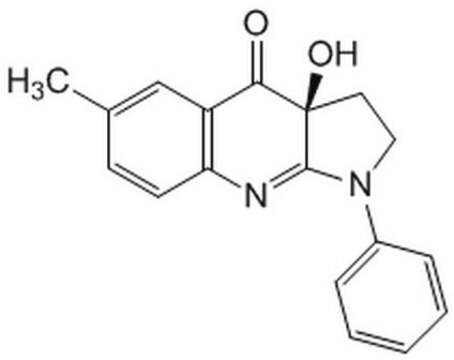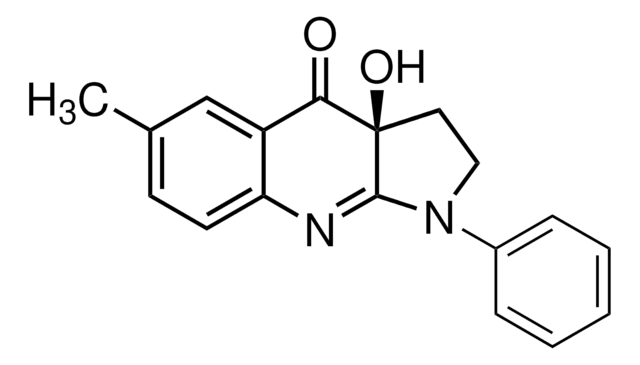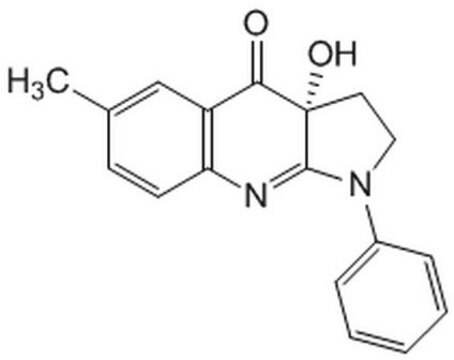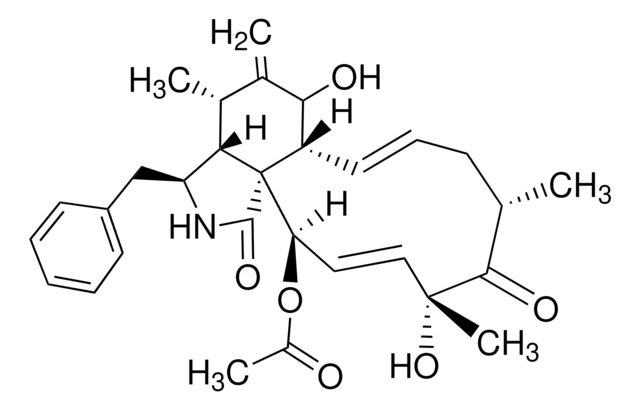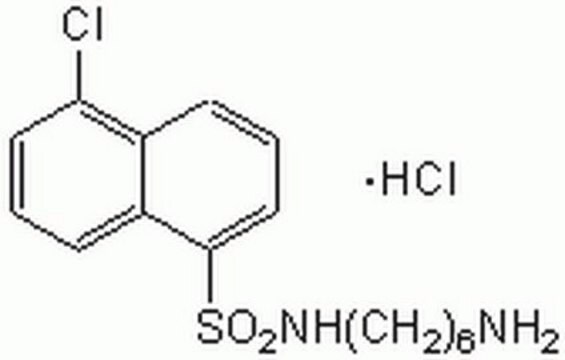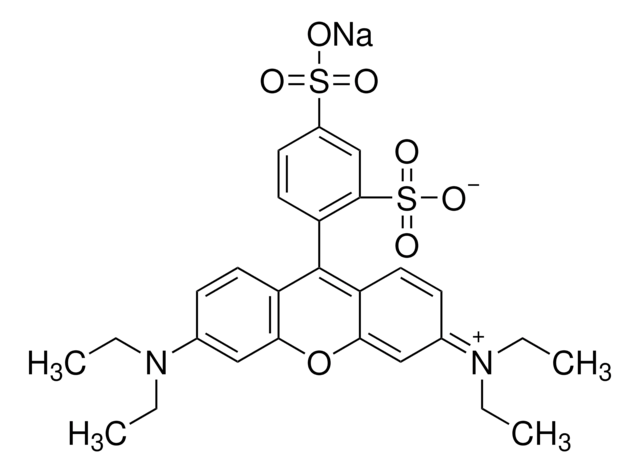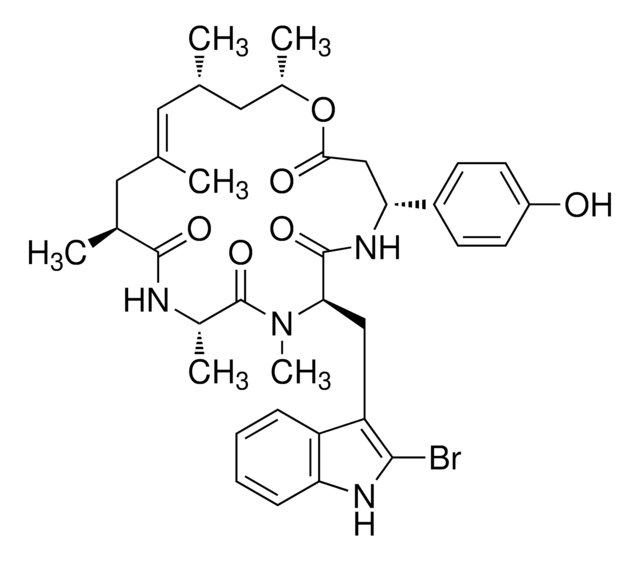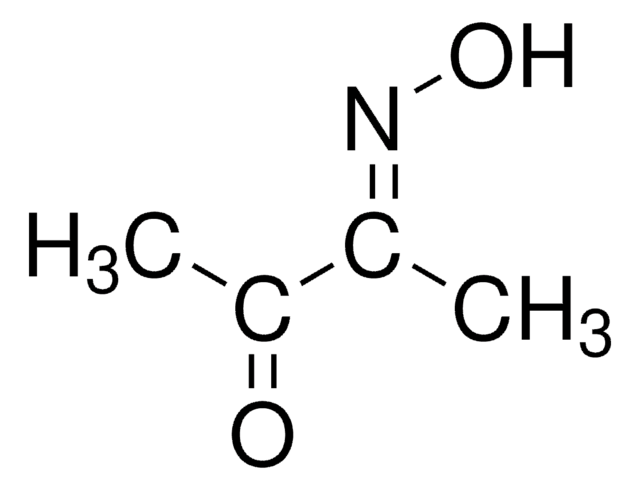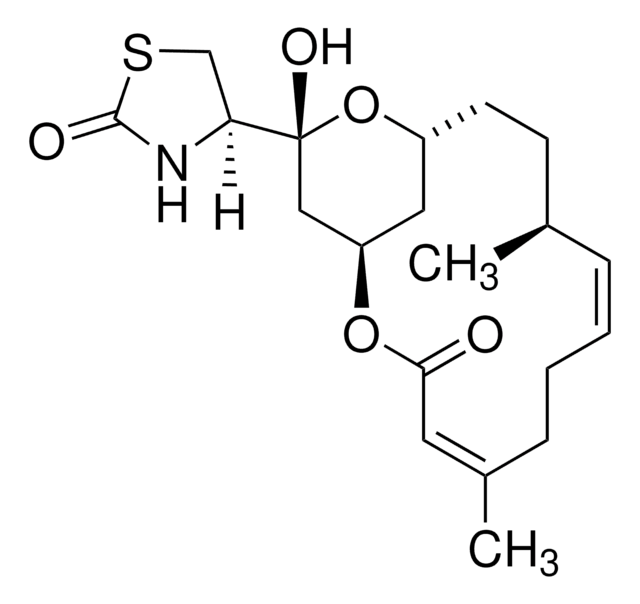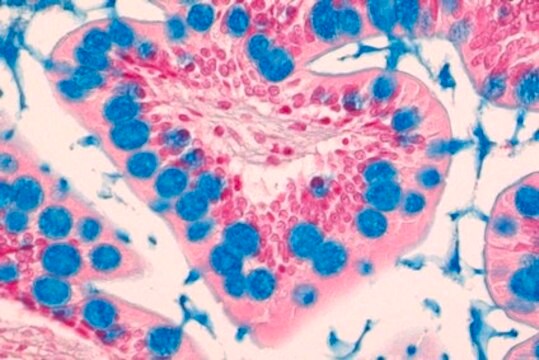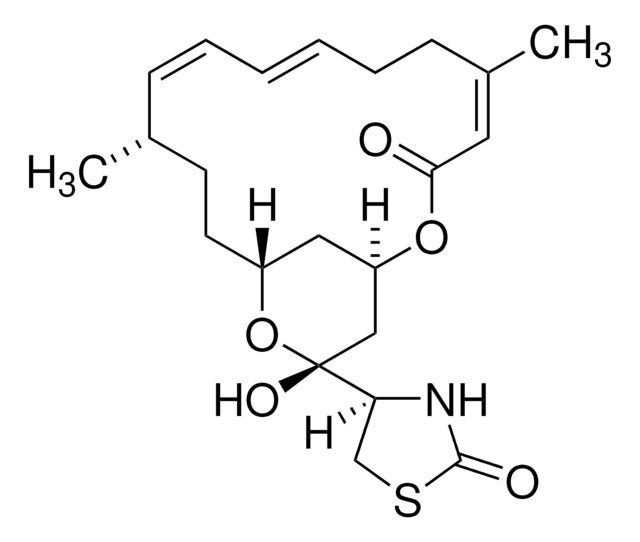203390
(±)-Blebbistatin
≥97% (HPLC), solid, Myosin II inhibitor, Calbiochem®
Synonim(y):
(±)-Blebbistatin
About This Item
Polecane produkty
product name
(±)-Blebbistatin, (±)-Blebbistatin, CAS 674289-55-5, is a cell-permeable, selective, and reversible inhibitor of nonmuscle myosin II. Blocks cell blebbing and disrupts cell migration & cytoKinesis in vertebrate cells.
Poziom jakości
Próba
≥97% (HPLC)
Postać
solid
producent / nazwa handlowa
Calbiochem®
warunki przechowywania
OK to freeze
protect from light
kolor
yellow
rozpuszczalność
methanol: 1.5 mg/mL
100% DMSO: 100 mg/mL
90% DMSO: 75 mg/mL
Warunki transportu
wet ice
temp. przechowywania
−20°C
InChI
1S/C18H16N2O2/c1-12-7-8-15-14(11-12)16(21)18(22)9-10-20(17(18)19-15)13-5-3-2-4-6-13/h2-8,11,22H,9-10H2,1H3
Klucz InChI
LZAXPYOBKSJSEX-UHFFFAOYSA-N
Opis ogólny
Działania biochem./fizjol.
ATPase
Opakowanie
Rekonstytucja
Inne uwagi
Kovacs, M., et al. 2004. J. Biol. Chem.279, 35557.
Straight, A.F., et al. 2003. Science299, 1743.
Cheung, A., et al. 2001. Mol. Biol. Cell Suppl.12, 271a.
Informacje prawne
Kod klasy składowania
11 - Combustible Solids
Klasa zagrożenia wodnego (WGK)
WGK 2
Temperatura zapłonu (°F)
Not applicable
Temperatura zapłonu (°C)
Not applicable
Certyfikaty analizy (CoA)
Poszukaj Certyfikaty analizy (CoA), wpisując numer partii/serii produktów. Numery serii i partii można znaleźć na etykiecie produktu po słowach „seria” lub „partia”.
Masz już ten produkt?
Dokumenty związane z niedawno zakupionymi produktami zostały zamieszczone w Bibliotece dokumentów.
Klienci oglądali również te produkty
Nasz zespół naukowców ma doświadczenie we wszystkich obszarach badań, w tym w naukach przyrodniczych, materiałoznawstwie, syntezie chemicznej, chromatografii, analityce i wielu innych dziedzinach.
Skontaktuj się z zespołem ds. pomocy technicznej